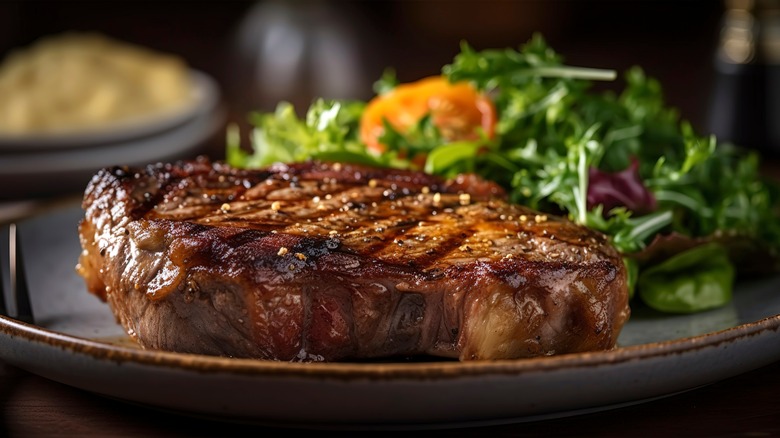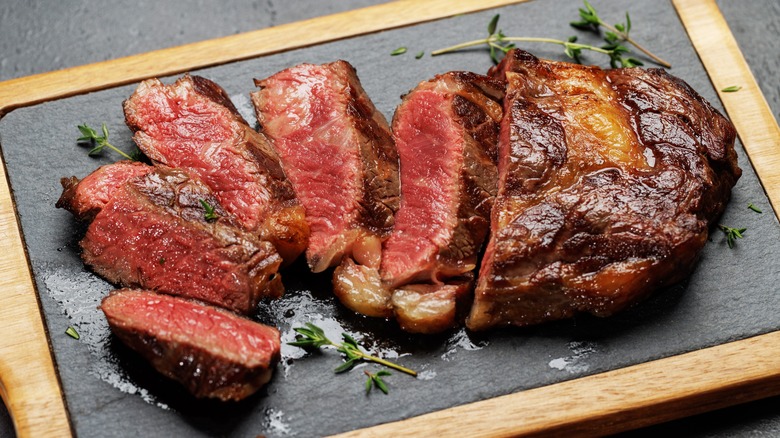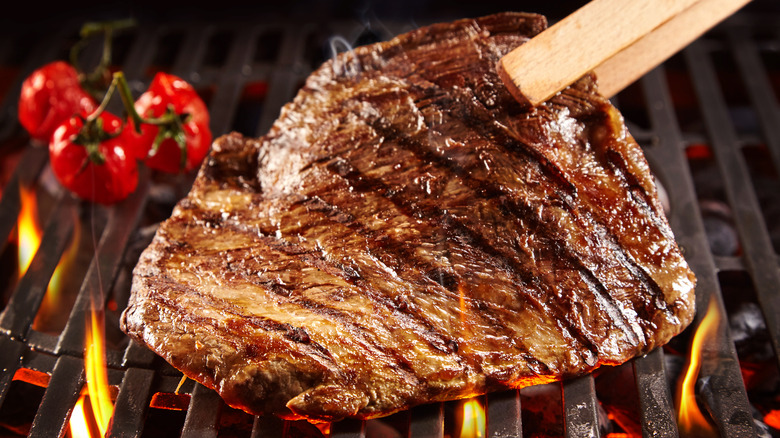Effortlessly Sear Meat On Its Side With A Simple Fork Hack
If you're a meat lover, nothing satisfies quite like a thick, perfectly cooked piece of steak. If you have a thin cut, it will sear quickly on both flat sides, meaning you don't need to add the extra step of somehow balancing the steak on its side to get that sear at every angle. But if you're preparing a thicker cut, this step becomes important to make sure every part of the steak's exterior is safely cooked. In this case, all you need to do is simply prop the steak up using a fork, let it sear quickly on its side, then flip it and take care of the other side.
The fork trick is easy, but there is something to keep in mind: keep the fork as shallow and as close to the steak's edge as possible, and don't puncture each side of the steak with your fork more than once or you could risk altering the finished product.
Use a fork to properly sear all sides of your steak
No matter your preferred internal temperature, you should always properly sear your steak's exterior. Steak is generally safe to eat when cooked to medium rare because, in most cases, no harmful bacteria have been introduced to the center of the meat. However, the meat's exterior is a different story. It's been exposed to air, meaning there is greater potential for bacterial contamination. Not only does the exterior sear add flavor and build up appearance, but it's also essential for food safety.
Take a fork, and poke it just far enough into the steak to get a grip on the meat. Then, use the fork to turn the steak on its side, where you should let it sear until it gets that golden brown exterior. Gently remove the fork, and do the same on the other side of the cut, remembering to keep the fork as shallow as possible.
Properly using the fork method is important
If you have a pair of tongs, this utensil would work even better because it doesn't require you to puncture the meat, but a fork is a solid option otherwise. However, there is a reason you want to keep the fork shallow: You want to prevent the juices from leaving the steak. The juices are an integral part of a steak's flavor and texture. If you puncture the fork too deeply, those juices could flow out, leaving the steak dry and making it more easily overcooked. They also add flavor, and removing them could result in a tasteless dish.
To increase flavor, salt the steak at least 30 minutes prior to cooking it, but you can even do so a day ahead of time to build the most taste. It's easy to overlook salting the sides, but if you plan to sear them and build that caramelization, it's an essential step.


